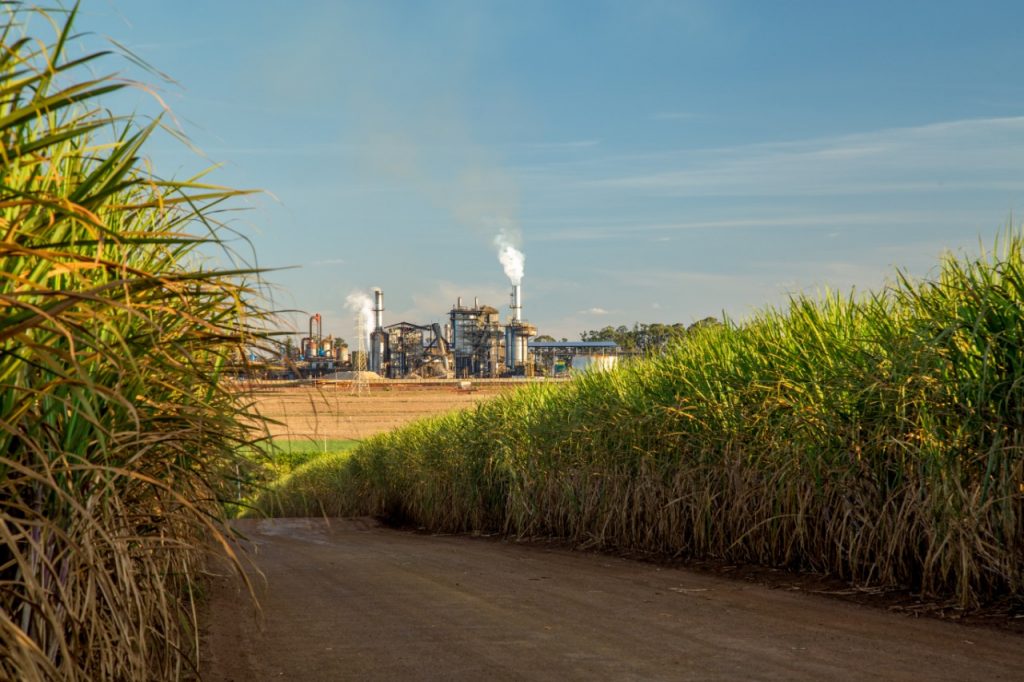São Paulo – The Brazilian 2020-21 sugarcane crop is just beginning but is promising and can allow Brazil to have a large sugar export supply. According to the “Fortnightly Monitoring of the Center-South Region Crop” through May 16 released by the Brazilian Sugarcane Industry Association (UNICA), the sugarcane grinding through mid-May surpassed 103 million tonnes, up 21.67% from a year ago. Out of this, 45.3% of the processed sugarcane was directed to the sugarcane production, up from 32.19% in the 2019-20 crop. These figures refer to Brazil’s Center-South production, which amounts to 59% of the Brazilian total.
The change in the ethanol-sugar production ratio is related to a change in the market demand. According to Grupo Tereos board member and Federation of Industries of the State of São Paulo (FIESP) chairman Jacyr Costa Filho, the Russia-Saudi Arabia oil price war in early March and the COVID-19 pandemic have reduced oil and gas prices, which affected the ethanol competitiveness. The product is used as a fuel in Brazil. Moreover, the demand for fuels in general has dropped.
Simultaneously, some countries such as China have begun importing large amounts of sugar again to rebuild their stocks. The same goes for Muslim countries due to the end of Ramadan on May 23.
Costa said that Brazil is slanted to export 28 to 30 million tonnes of sugar this crop and provide for 50% of the world demand. This is not only because Brazilian production and exports are increasing, but because Thailand – the world’s second largest exporter – is tackling a crop failure due to the worst drought in 40 years.
UNICA technical director Antonio de Padua Rodrigues says that, in 2020-21, Brazil can go back to record-high levels reached three years ago. A production of 38 million tonnes of sugar is expected for the 202-21 crop, 36 million being produced by the Center-South plants and 2 to 3 million tonnes by the Northeast units. This amounts to an increase of approximately 9 million tonnes from a year ago.
Both Rodrigues and Costa point out that world sugar prices are low, around USD 0.10 to USD 0.11 a pound, but the favorable exchange compensates for the low prices. “Prices have dropped, but Real devaluation against dollar led to a gain in competitiveness and made up for the costs,” Costa says.
Costa points out that the Arab countries are already major sugar importers and that the commodity amounted for 20% of the Brazilian agribusiness exports. “The Arab countries are a major sugar destination. They are the third largest destination of the agribusiness imports and have gained relevance for Brazilian companies since they are also investment partners,” he says, pointing out that there are Brazilian companies with plants in the Gulf and Middle Eastern investment in Brazil’s animal protein sector.
Padua points out that Brazil’s sugarcane industry is also versatile and capable of meeting different demands. It can produce ethanol for fuel, alcohol for disinfection purposes and sugar for both the domestic and international markets. “Brazil stands out from other countries as 85% of our plants are able to produce both sugar and ethanol, thus optimizing production,” he says.
Pictured above, a sugarcane crop.
*Report by Marcos Carrieri, specially for ANBA
Translated by Guilherme Miranda




